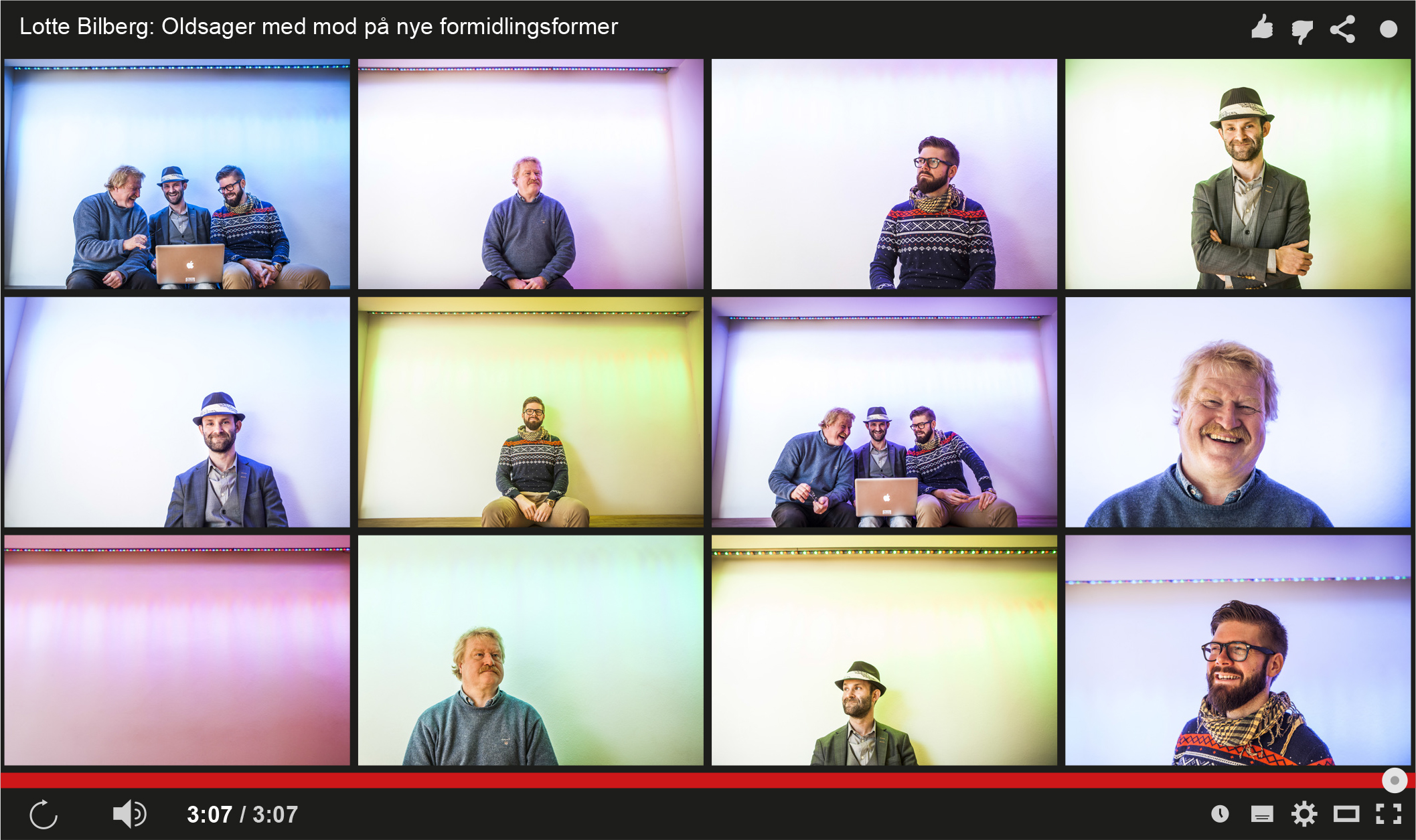Ancient history meets modern media
Three teachers from the Department of Culture and Society are keen to include modern media in their teaching. So far they have been on a course about how to produce video sequences, and their students will soon be able to watch them explaining complex material on YouTube.

Teaching between lessons. That’s the short version of the educational philosophy that appeals to Mogens Skaaning Høegsberg, an assistant professor of medieval and renaissance archaeology; and Felix Riede and Jens-Bjørn Riis Andresen, who are both associate professors of archaeology.
More dialogue
The three teachers have joined forces to find out how they can use modern media to create differentiated teaching, ensure more dialogue – and in general to generate better interaction between teachers and students in the classroom.
They have started by focusing on short videos as a form of communication, a choice which like so much else was due to pure chance. Andresen’s wife is a schoolteacher, and after being on a course she came home and told her husband about the concept of the flipped classroom.
“I read an article about the flipped classroom in my wife’s teachers’ magazine, and was so impressed that I wrote a short application to the board of studies at the Department of Culture and Society. The response was very positive – they gave me a grant of DKK 50,000,” he reports.
What’s a flipped classroom?
Briefly put, the concept of the flipped classroom means that teachers can spend their time more constructively in the classroom, providing that the students have studied the topic in question before the lessons – for instance by watching short videos in which their teachers explain various points within the academic field in question.
“For instance, we’re thinking of making a few short video clips involving in-depth presentation of a topic such as how to identify and date archaeological remains,” says Høegsberg.
“The students need to learn to look at the subject matter analytically. And showing them a video helps us to ensure that everyone learns the method in question at their own speed,” adds Riede.
And Høegsberg explains that “Students who don’t really understand what you’re driving at during the lessons often keep quiet about it, and this could turn into a serious problem for them later on in their studies. This is why we want to ensure that everyone learns what we’re trying to teach them”.
Inspiring your colleagues
The aim is to design concepts for (and subsequently demonstrate the use of) instructive videos for their colleagues, enabling them to use student-friendly media in their teaching as well.
FACTS
“The flipped classroom” is a model that was developed in the US in early 2007. The educational method is constantly being developed:
- flippedlearning.org
- laeringsteknologi.dk (search word: flipped classroom)
Teachers who are interested in using modern media in their teaching are welcome to ask the Centre for Teaching Development and Digital Media for advice.
Translated by Nicholas Wrigley

